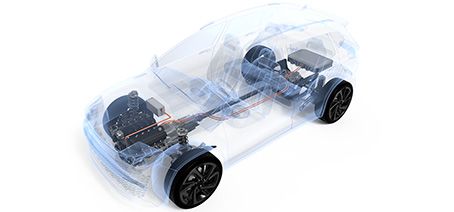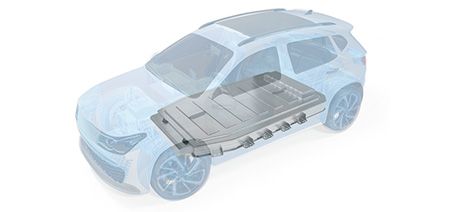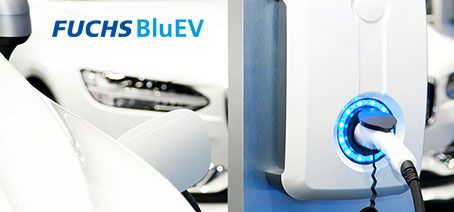E-mobility solutions for battery electric vehicles (BEV)

Electric vehicles have become an indispensable part of the transformation of the automotive industry. Due to their efficiency, environmental friendliness and flexibility, they will play a crucial role in the mobility of the future.
They require less maintenance than vehicles with combustion engines because they have fewer moving parts and their electric drive means that neither oil changes nor exhaust systems are required. In addition to the fact that electrified vehicles do not cause any direct CO2 emissions during operation, they are significantly more efficient than fuel-powered vehicles, as electric motors lose less energy as heat and convert it more efficiently into motion.
The central components of an electric vehicle are the electric motor, the transmission and the battery, which are optimized for the special requirements of the electric drive train.
Special requirements for lubricants for electric drives

While the main focus in combustion engines is on lubricating the engine, various systems in electric vehicles, such as the electric motor, transmission, battery and power electronics, must be optimally cooled and lubricated. These specialized lubricants and fluids must meet the highest requirements in terms of temperature resistance, corrosion protection, efficiency and environmental compatibility in order to meet the specific challenges of electromobility.
The cooling of the electric motor plays an important role in the efficiency and service life of electric cars, with two variants being distinguished:
- Electric motors are air-cooled in the case of dry electric axles – either by natural air circulation or by a fan air flow. This type of engine cooling is mainly found in vehicles whose engines are not not exposed to high loads.
With a wet E-axle, the motor is cooled by a liquid coolant that dissipates the heat generated during operation. In high-performance vehicles, the cooling function is often carried out by a special transmission oil (EDF).
The difference between “wet” and “dry” therefore does not relate to the engine itself, but to the way in which the heat generated is dissipated.

Electric
Driveline
Fluids (EDF)
Transmission oils for electric vehicles vary depending on the application. The type of e-axle plays a decisive role here. For dry e-axles, the gear oil (EDF dry) must meet increased requirements for temperature stability in addition to wear protection and friction coefficient optimization.
Transmission oils for wet e-axles (EDF wet) must also ensure that the electric motor is cooled in order to keep it at the optimum operating temperature. Due to the direct contact with copper windings and their coating, the main focus is also on material compatibility and corrosion protection. Compatibility with current-carrying components must also be ensured.
Highlights of the FUCHS BluEV portfolio:

Thermal Management for battery & engine
Thermal management is an important component in electric vehicles to keep the battery and electric motor at optimum operating temperature, which maximizes the performance, safety and service life of the vehicle.
Fluids with particularly good thermal conductivity and frost resistance are used here. They must protect the metal parts in the cooling circuit from corrosion and have low electrical conductivity to avoid short circuits in the engine or battery.
The fluids also help to reduce the noise of the electric motor at high engine speeds.
Highlights of the FUCHS BluEV portfolio:

Greases for highly demanded components
In electric vehicles, lubricating greases must work reliably even at high speeds, with large temperature variations and under electromagnetic stress. They must be particularly durable in order to ensure lifetime lubrication and minimize wear on the components.
As electric cars are generally quieter in operation than vehicles with combustion engines, lubricating greases must also be designed for low-noise operation in order to generate as little noise as possible due to vibrations or friction. A high-performance lubricating grease also minimizes the e-motor phenomenon of hoot noise.
In addition, special greases are used on electrical connectors or contacts to prevent corrosion and ensure conductivity.
Highlights of the FUCHS BluEV portfolio:
FUCHS solutions for the future of mobility
Future mobility lubrication: Products exclusively for EV/HEV applications
Products that are compatible with both conventional and EV/HEV applications
Sustainability meets Performance: Products based on renewable materials
Driving the future of mobility with advanced electrolyte solutions

What about your challenges?
Let us know how we can support you with lubricant solutions for e-mobility.
Thomas Kraft (Business Development Manager E-Mobility) is looking forward to your questions.







